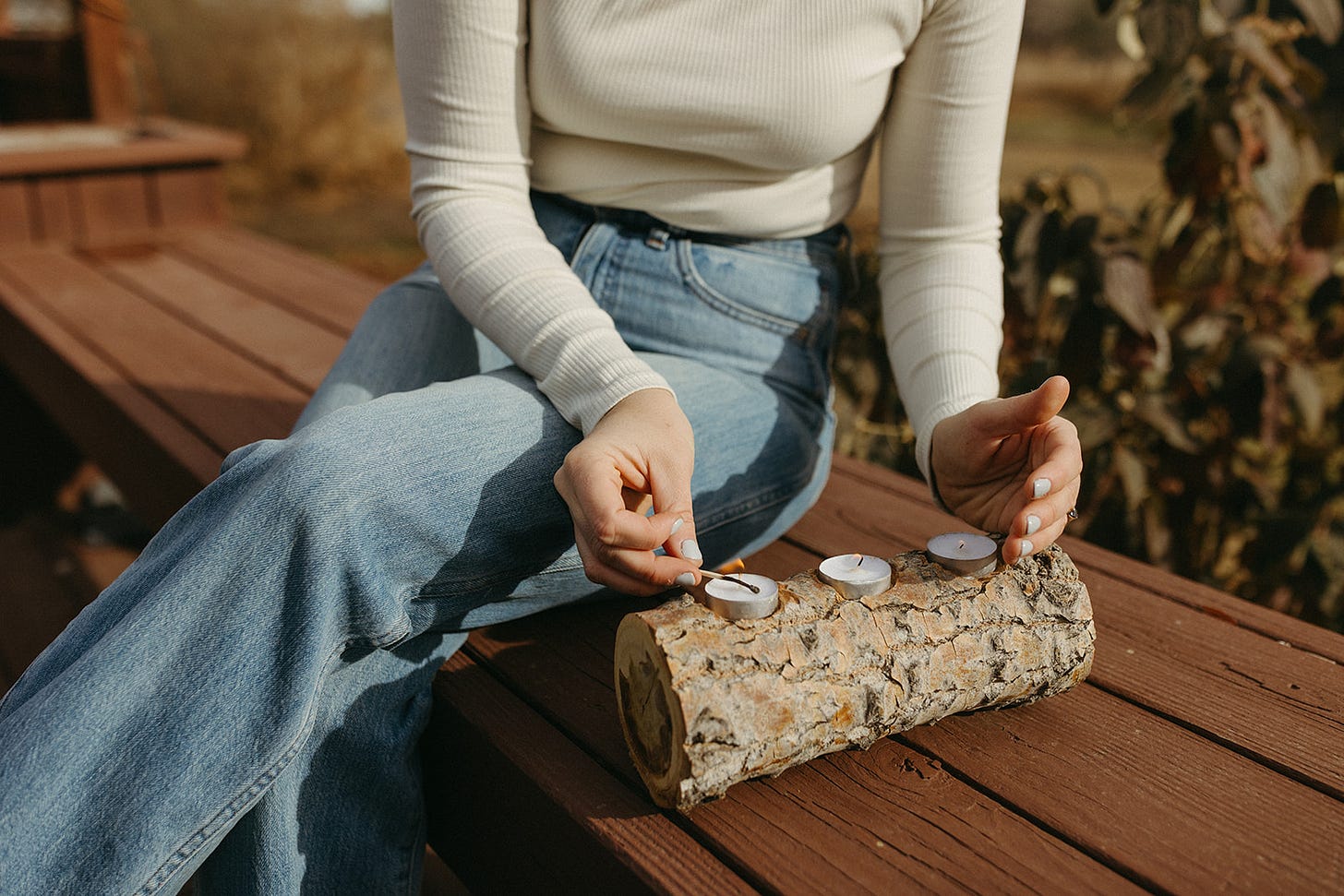Winter Rest: Finding Balance in the Garden and in Life
A Colorado gardener on rest, winter solstice and tree care.
As we move through mid-December, I’ve been reflecting on the rhythms of the season. We’ve had a mix of warm days and cool nights, with winds tossing the covers off my raised beds. They’ve been left exposed to the 20-degree nights—not because it’s ideal, but because it’s what feels right for me right now. This winter, I’ve allowed myself to rest alongside my garden.
Though I know I could grow food throughout the winter, I’ve decided it’s okay to pause. It’s okay for my land and for me. My pantry still holds stores of squash, garlic, herbs, and onions, so I’m grateful for the abundance already gathered. My mornings have been marked by steaming cups of tea—a simple concoction of oatstraw and whatever herbs call to me that day. Today, it was hawthorn berries and calendula, gifts from my garden that help me feel connected to the natural world even as the soil rests beneath frost.
This season of cold has brought me indoors to focus on creative projects: painting, dreaming, and visioning the gardens that will come to life in the spring. Two wonderful projects are already underway—an herb farm project I’ll share more about soon and a stunning garden for a Horsetooth Reservoir home with breathtaking views.
Amidst these projects, I’ve also been preparing for a Winter Solstice workshop with Wild Roots Studio. We’ll celebrate the return of light by crafting wreaths and Yule logs, foraging greenery, and reflecting on the planet’s quiet shift as the sun lingers a little longer each day. I’ve been slicing and dehydrating oranges for decorations, both for my home and the workshop, relishing the beauty of creating with nature during this season of reflection.
Dehydrating Orange Slices
Dehydrating orange slices is a simple and satisfying way to bring a touch of seasonal beauty to your home. Here’s how:
Slice the Oranges: Cut oranges into thin slices, about ¼ inch thick. Remove any seeds for a clean look.
Dry the Slices: Arrange the slices on a baking rack or parchment-lined baking sheet. Bake at the lowest oven setting (around 170°F) for 3-4 hours, flipping them halfway through. If you have a dehydrator, use it on the fruit setting for 6-8 hours.
Store or Decorate: Once fully dried, store them in an airtight container or use them to decorate wreaths, garlands, or gift wrap.
Winter Garden Care
Even as my garden rests, I’ve been mindful of a few tasks to support the health of my trees and landscape:
Watering Trees on Warm Days: When the temperatures rise above 40°F, I make a point to water my trees. Winter can be tough on trees, especially in dry climates, and periodic watering helps prevent stress.
Protecting Trees from Deer: The deer on my property come in the late evening to early morning, often nibbling on young trees. I’ve been using physical barriers like tree wraps or temporary fencing to keep them safe. Protecting trees during this season ensures their strength and growth come spring.
These simple acts of care, though small, can make a significant difference. If you’re able to, consider checking on your trees and shrubs—both the roots and the wildlife depend on our attention during this time.
Tips for the Season
Here are a few practical tips to carry you through the rest of winter:
Observe Your Soil: On warmer days, take a moment to check your soil’s moisture levels. Adding a light layer of mulch can help retain moisture and regulate temperature swings.
Plan Ahead: Winter is the perfect time to plan next year’s garden. Sketch out your ideas, research plants, and consider what changes or expansions you’d like to make.
Connect with Nature: Even if the garden is dormant, you can stay connected by foraging greenery, tending to indoor plants, or simply stepping outside to observe the quiet beauty of winter.
Honoring Tradition and Rest
Winter, for me, feels rich with tradition. It’s a time when cultures across the globe honor the cycles of light and dark in ways both ancient and modern. Over the years, I’ve found myself yearning to reconnect with traditions that may have been lost in my lineage—practices rooted in a deep appreciation for the earth. At the same time, I’m creating new traditions for my family.
One of my favorites is turning off all the lights on the Winter Solstice and living by candlelight for an evening. It’s a small act, but it brings an awareness of the beauty and necessity of darkness, allowing us to truly appreciate the light when it returns.
I wonder—what new traditions are you building for yourself or your family this season? How are you connecting to the earth, to the rhythms of nature, or to your own sense of rest and renewal?
Looking for inspiration for activities for the Winter Solstice? I’ve written some ideas for you over at Mother Gardener.





